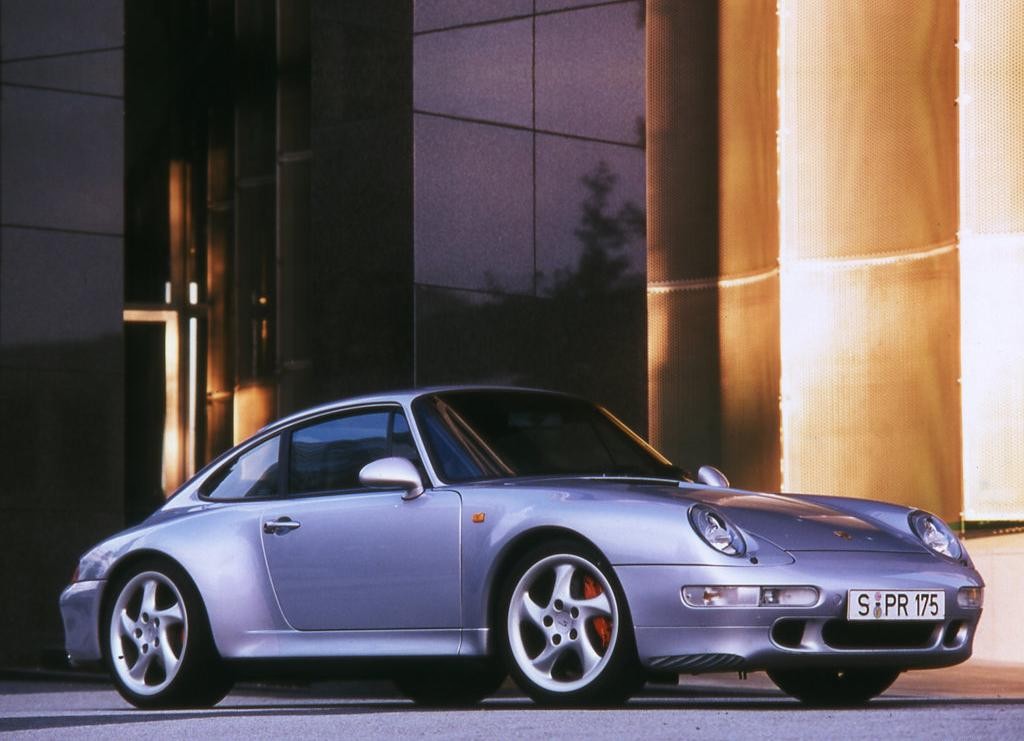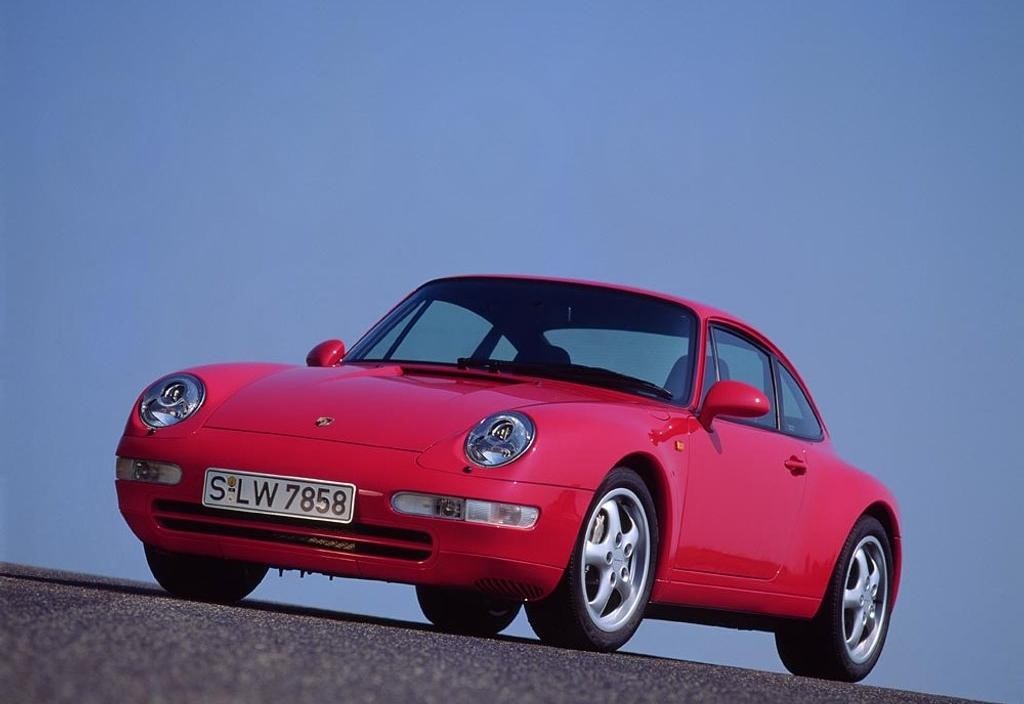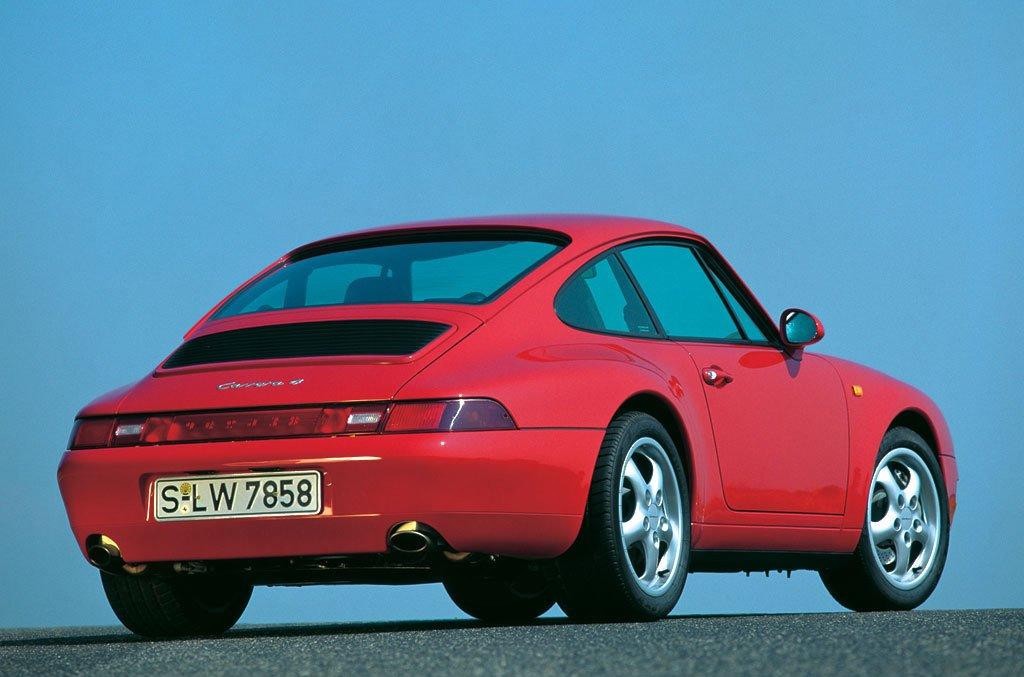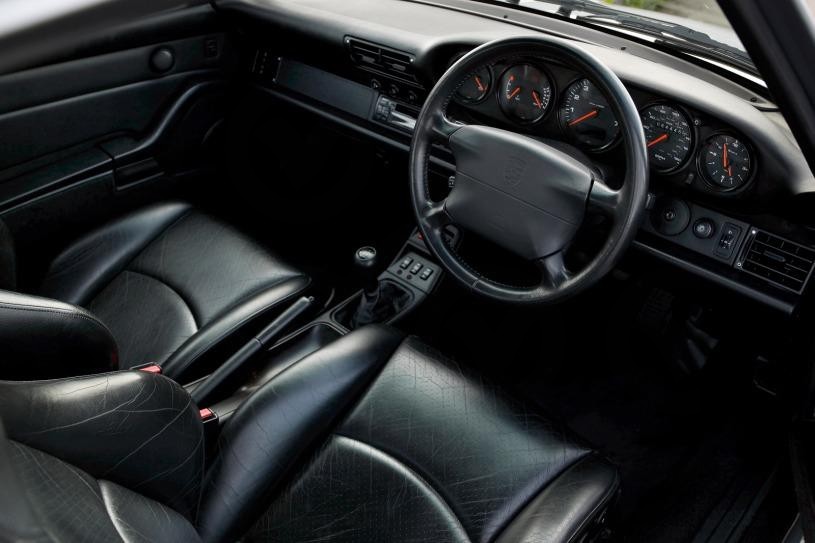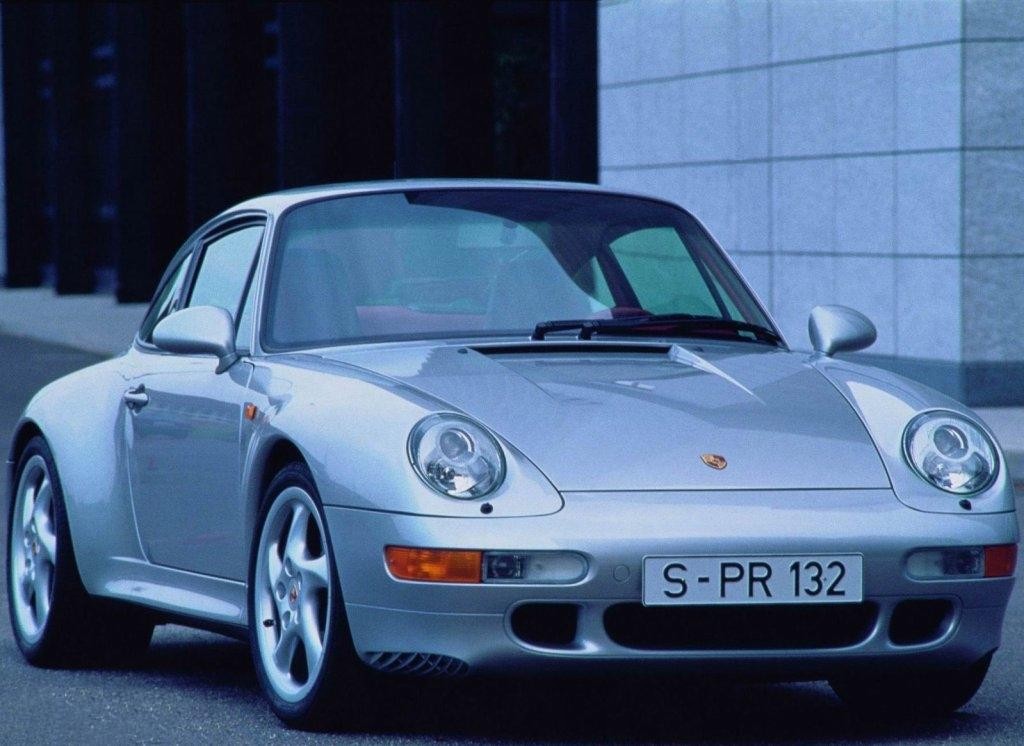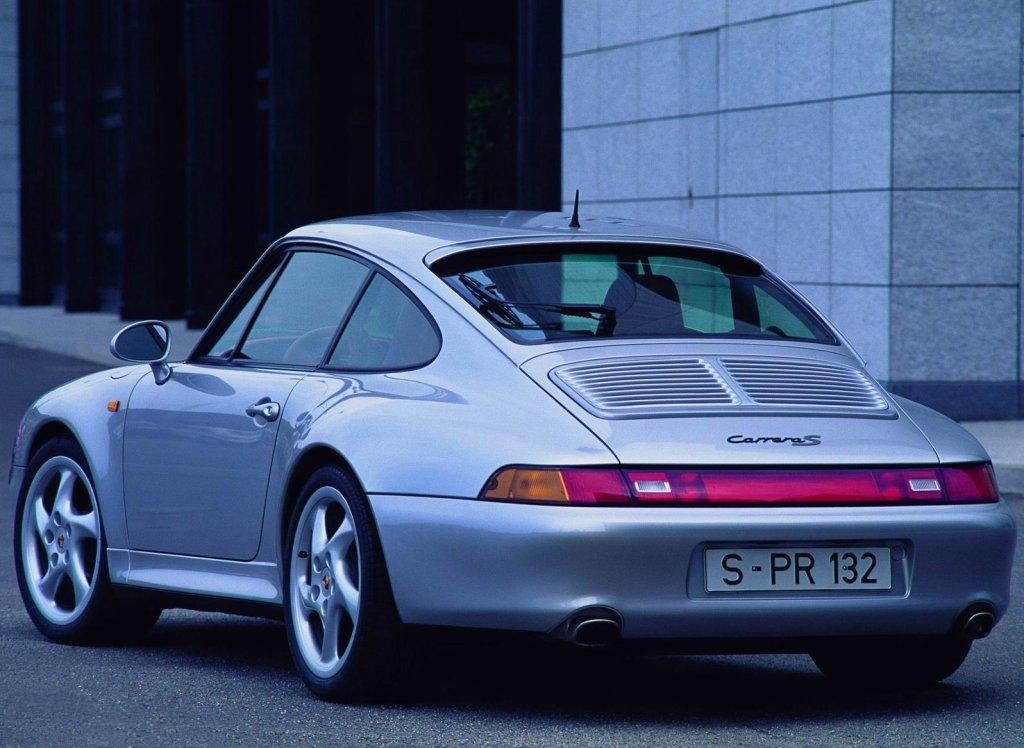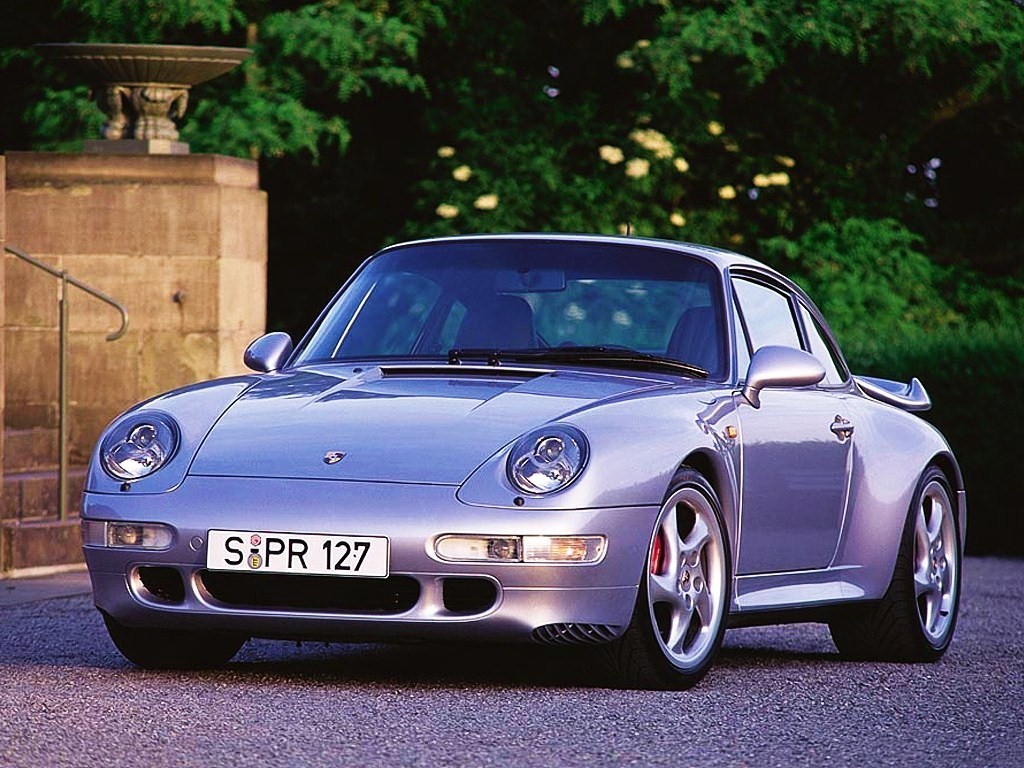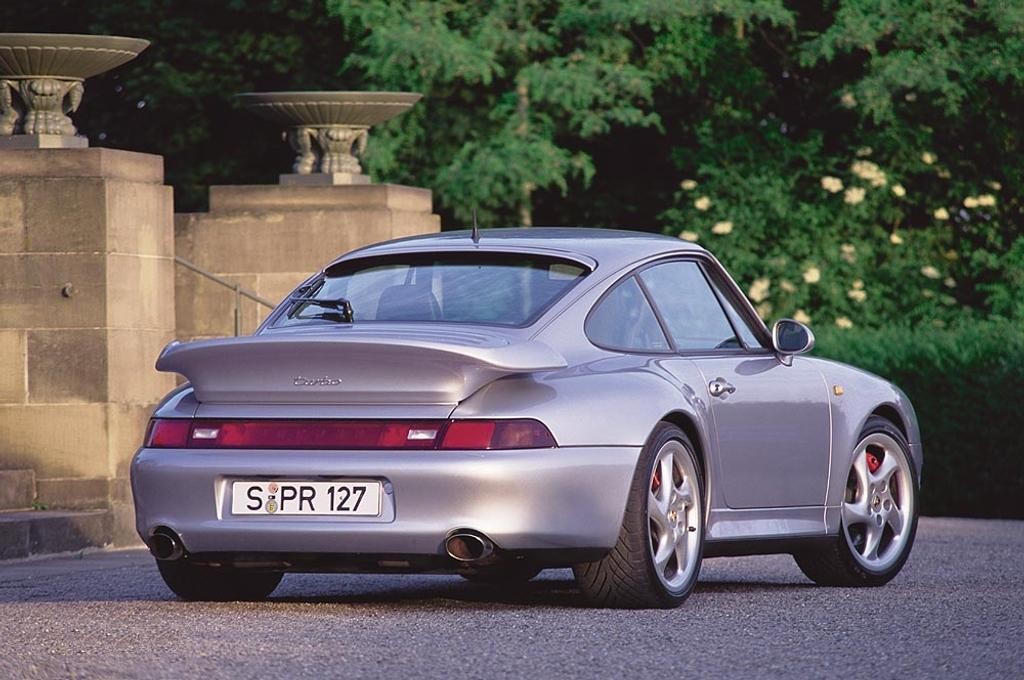
- Free-revving six-cylinder engines (and last of the air-cooled engines)
- Newly introduced five-link rear suspension made for impressive dynamics
- Accurate, direct steering provides excellent feedback
- Responsive brakes
- Skewed driving position and offset pedals
- Controls and instruments obscured by steering wheel
- Engine noise at higher rpm
- Rear seats only for small children
Overview
Released in February 1994, the Porsche 993 911 Coupe was a two-door fastback. Manufactured in Stuttgart, Germany, the Carrera variants were powered by a 3.6-litre horizontally-opposed (or flat) six-cylinder petrol engine that was mated to either a six-speed manual or four-speed automatic transmission. In 1995, however, the range was expanded with the introduction Turbo variants which added twin turbochargers and lightweight Carrera RS variants which had a larger, 3.8-litre engine. The full range is given in the table below.
From October 1995, the 3.6-litre naturally aspirated M64/21 engine was fitted with Porsche’s ‘VarioRam’ system which varied the effective length of the inlet ducting according to engine load and speed. Hence, a longer intake length at low rpm provided higher intake air velocity, assisting low-end torque. The 993 911 Coupe also introduced a new engine management system and six-speed manual transmissions.
Dimensions
Compared to the 964 911 Coupe , the 993 911 Coupe was 5 mm shorter (at 4245 mm), 83 mm wider (1735 mm) and 20 mm lower (1300 mm), though wheelbase length was unchanged (2272 mm). Visually, the 993 911 Coupe could be identified by its more rounded styling.
Suspension
The 993 911 Coupe had MacPherson strut front suspension and a five-link rear suspension with double wishbones that was, mounted on an aluminium subframe and attached to the body via rubber bushings – this new rear suspension configuration was designed to reduce lift-off oversteer.
| Variant | Years | Engine | Drive | Trans. | Peak power | Peak torque |
|---|---|---|---|---|---|---|
| Carrera | 1994-95 | 3.6-litre petrol F6 | RWD | 6sp man., 4sp auto |
200 kW at 6100 rpm | 330 Nm at 4800-5000 rpm |
| 1995-97 | 3.6-litre petrol F6 | RWD | 6sp man., 4sp auto |
210 kW at 6100 rpm | 340 Nm at 4800-5250 rpm | |
| Carrera S | 1996-97 | 3.6-litre petrol F6 | RWD | 6sp man., 4sp auto |
210 kW at 6100 rpm | 340 Nm at 4800-5250 rpm |
| Carrera 4 | 1995 | 3.6-litre petrol F6 | AWD | 6sp man. | 200 kW at 6100 rpm | 330 Nm at 4800-5000 rpm |
| 1995-97 | 3.6-litre petrol F6 | AWD | 6sp man. | 210 kW at 6100 rpm | 340 Nm at 4800-5250 rpm | |
| Carrera 4 S | 1996-97 | 3.6-litre petrol F6 | AWD | 6sp man. | 210 kW at 6100 rpm | 340 Nm at 4800-5250 rpm |
| Carrera RS | 1995-96 | 3.8-litre petrol F6 | AWD | 6sp man. | 221 kW at 6500 rpm | 355 Nm at 5400 rpm |
| Turbo | 1995-98 | 3.6-litre twin turbo petrol F6 | AWD | 6sp man. | 300 kW at 5750 rpm | 540 Nm at 4500 rpm |
| Turbo S | 1998 | 3.8-litre twin turbo petrol F6 | AWD | 6sp man. | 331 kW at 6000 rpm | 585 Nm at 4500 rpm |
AWD system
The Carrera 4 and Turbo variants were fitted with an automatic all-wheel drive system which utilised a viscous coupling (rather than the epicyclic centre gear differential of the 964 911’s all-wheel drive system). In normal conditions, 85 to 95 per cent of the engine’s torque was directed to the rear wheels. If, however, traction was lost, the viscous coupling would lock, engage the front axle and deliver torque to the front wheels.
The all-wheel drive system also incorporated an Automatic Brake Differential (ABD). In the event that a rear wheel lost traction, the ABS would brake the spinning wheel to send more torque to the opposing wheel.
Safety equipment
Standard safety equipment for the 993 911 Coupe included dual front airbags and ABS.
Features: 911 Carrera and Carrera 4
Standard features for the Carrera and Carrera 4 variants included 16-inch alloy wheels, a ten speaker sound system with CD player, climate control air conditioning, a power adjustable driver’s seat, leather seats, cruise control, front fog lights, a leather-wrapped steering wheel, central locking, power mirrors, power windows and an alarm.
Features: Carrera S and Carrera 4 S
Compared to the standard Carrera, the Carrera S and Carrera 4 S shared their wider bodyshell – with widened rear wheel arches and redesigned bumper mouldings – with the Turbo variants (see below). The Carrera S and Carrera 4 S had similar features to the standard Carrera, but were fitted with 17-inch alloy wheels and lowered suspension. The Carrera 4 S was also fitted with an upgraded braking package as per the Turbo.
Features: 911 Turbo and Turbo S
The 3.6-litre engines for the Turbo and Turbo S were fitted with twin KKK K16 turbochargers, Bosch M5.2 engine management and electronic boost control which enabled different levels of boost pressure according to revs. As such, a maximum 0.94 bar was available for 3500 rpm, 0.6 bar for 5200 rpm and 0.75 bar for 6500 rpm. The engines also featured redesigned cylinder heads, reinforced con rods and hollow valves cooled by natrium. From 1997, the Turbo was fitted with stronger transmission input shafts, a programmable ECU, motion sensors for the alarms were integrated into the map light above the rear view mirror.
Visually, the Turbo variants could be identified by their 18-inch alloy wheels with hollow spokes, bigger brakes, standard power sunroof and fixed rear wing (which housed the intercoolers).
The Turbo S variants were distinguished by their more powerful engines, carbon-fibre interior trim, additional leather upholstery, yellow brake calipers, larger rear wing, four-pipe exhaust and air intakes behind the doors. Australian deliveries of the Turbo S were limited to 12 vehicles.
911 Carrera RS Touring and Carrera RS CS
In 1995, Carrera RS variants were released and were available as Touring and CS (Club Sport) editions. The Carrera RS variants reduced kerb weight by omitting headlight washers and rear seats, fitting special racing seats and having less sound proofing material; the Carrera RS CS had a welded roll cage and also omitted the radio, air conditioning, carpets and power windows.
Compared to the standard Carrera, the Carrera RS variants were both fitted with three-piece 18-inch aluminium wheels, four-piston front and rear brake calipers with grooved discs and a limited slip rear differential. While the Carrera RS Touring was fitted with a non-retractable rear wing and small front flaps, the Carrera RS CS was fitted with a larger rear wing and deeper chin spoiler.
Related links
